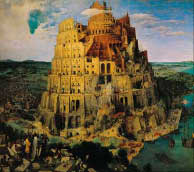In the early 1950s, the European Union as we know it did not exist, but a process of economic and political cooperation involving most Western European countries was already underway. And those countries came close to choosing a flag that featured the cross to represent their union.
The idea for the flag came from Count Richard von Coudenhove-Kalergi, who in 1923 had founded the Paneuropean Union, the first political organization dedicated to European unity. Son of a Bohemian diplomat and a Japanese patrician, Coudenhove-Kalergi was born an Austro-Hungarian subject in 1894, adopted Czechoslovak citizenship in 1919 after the breakup of the Habsburg Monarchy, and became a French citizen in 1939 after the takeover of Prague by Nazi Germany. He was concerned about the cultural dimension of post–World War II Europe. Would not a common religious, ethical, and aesthetic heritage be the best foundation for a secure future? Most of the founding fathers of the postwar European project agreed with him. They unanimously endorsed his choice of Ludwig van Beethoven’s Ode to Joy as the continent’s anthem.
But the flag posed problems.
The prewar Paneuropean Union had its own flag, a dark blue banner with a yellow globe and red cross. Why not wave it?, Coudenhove-Kalergi asked. Many European countries, from the U.K. and the Nordic countries to Switzerland and Greece, have already used the cross as a national symbol. Yet the issue turned out to be more difficult than expected. Some European countries did not use the cross in their flags, and thus tended to view it as a foreign symbol. A certain sector of European opinion argued that featuring a cross would be too dogmatically Christian or even too Catholic, or that other religious or philosophic sensibilities, from Judaism to secularism to Islam, should be acknowledged. (Turkey, Islamic at heart if outwardly secularized, had just joined the Council of Europe and NATO.)
Then there was the last, and truly disturbing, difficulty: The Paneuropean Union flag looked like an inverted Nazi flag—blue instead of red, a yellow circle rather than a white one, a Latin cross rather than the swastika, but still the same pattern.
Eventually, a different flag was adopted, the one we know today. Its twelve stars are, ironically, no less Christian and Catholic than Coudenhove-Kalergi’s design. A preliminary design submitted by the exiled liberal Spanish scholar Salvador de Madariaga envisioned golden stars against a blue field. Paul Lévy, a Catholic Belgian official at the Council of Europe, and Arsène Heitz, a Catholic French civil servant, redesigned the flag with twelve stars to symbolize harmony and stability. Though it is not clear that they really had in mind the Holy Virgin’s celestial crown (Levy later denied it, Heitz affirmed it), many Catholics came to read it that way, and some infuriated non-Catholics and secularists as well.
Looking back, it seems only natural that an emerging United Europe should have adopted Christian emblems. Christian statesmen and Christian parties carried weight in the preliminary processes of European integration. There was some talk in the late 1940s and early 1950s of a “Vatican Europe,” even a “Holy Roman Europe,” since the three major countries were led by devout Catholics: Alcide De Gasperi served as prime minister of Italy from 1945 to 1953; Robert Schuman served as foreign minister of France from 1948 to 1953; and Konrad Adenauer was chancellor of West Germany from 1949 to 1963. Other countries were likewise under strong Christian political influence: Belgium, the Netherlands, Luxembourg, Switzerland, Austria, and Ireland, as well as, in a different manner, Spain and Portugal.
In the ensuing decades, Europhile Christian parties continued to dominate Europe. In Germany, Christian Democratic chancellors have been in charge for fifty of the seventy years since the founding of the Federal Republic. Italy’s Christian Democracy Party (DC) was in power for almost fifty years, from 1945 to 1994. Christian parties have led or been part of most cabinets in most countries, including many of the former Eastern European countries that were welcomed into the European Union after 1989. The European People’s Party (EPP), inspired by Christian Democracy, has consistently been the largest single group at the European Parliament since that body’s beginning in 1976.
But is this political tradition, so important in the postwar era, still genuinely Christian? Christian Democratic parties have gradually abandoned some core values, such as defending the traditional family, traditional communities, and a common ethical heritage. They now endorse a vague and constantly revised philosophy of secular “human rights,” which they share not just with the moderate left but with the radical left as well. Whereas early Christian Democrats or Christian conservatives were eager to rebuild Europe as a Christian and humanistic polity, many of today’s nominally Christian politicians see Europe—or rather, the E.U. decrees and machinery in Brussels—as an end in itself. This “idea of Europe” supersedes Europe’s Judeo-Christian identity. A purely legal Europe has displaced  the real one.
the real one.
The European Parliament building in Strasbourg is suggestive of where this fantasy leads. Oddly (and tellingly), the E.U. was never able to decide where its mammoth assembly of 751 delegates should be located. Finally, two halls were built at great cost, the Paul Henri Spaak Building in Brussels (1989–93) for the more frequent “ordinary sessions,” and the Louise Weiss Building in Strasbourg (1999) for the “plenary sessions” that formally endorse Union legislation. Though much more elegant than its counterpart and rival in Brussels, the Strasbourg building elicits metaphysical bewilderment. It is an impressive, round structure, and its uppermost stories appear to be incomplete, lending it the appearance of  the Tower of Babel as frequently rendered in Western art. The image is of man’s rebellion against the heavens, a far cry indeed from the cross or Mary’s crown.
the Tower of Babel as frequently rendered in Western art. The image is of man’s rebellion against the heavens, a far cry indeed from the cross or Mary’s crown.